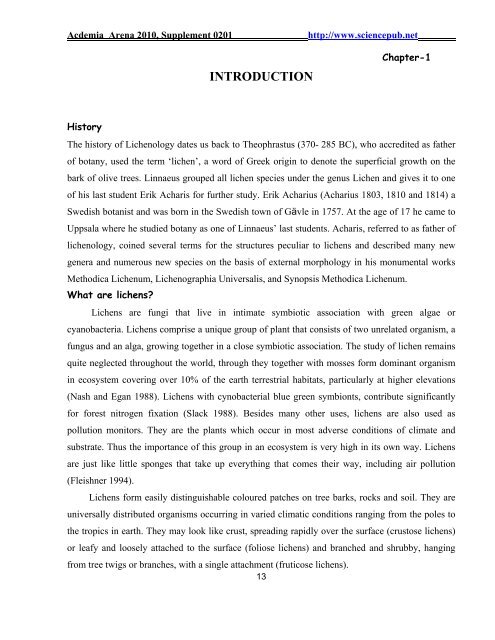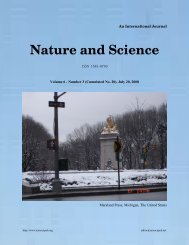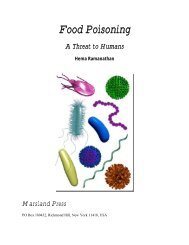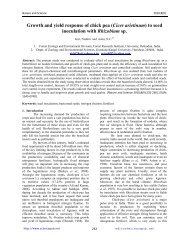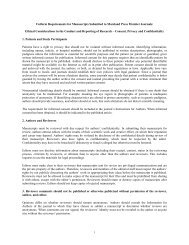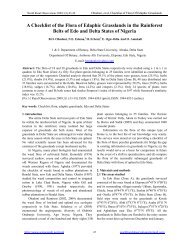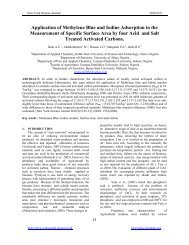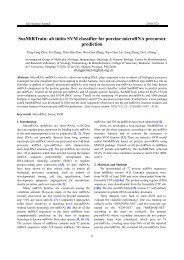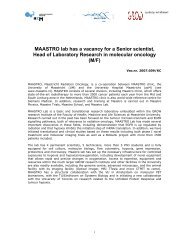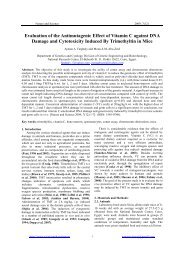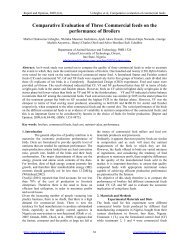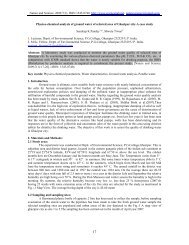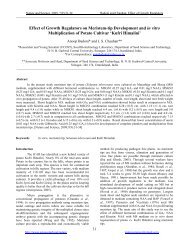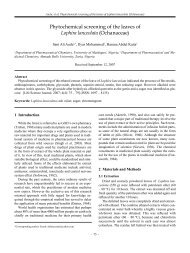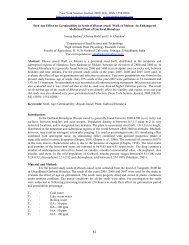Ecological, Social and Commercial Role of Lichens in India with ...
Ecological, Social and Commercial Role of Lichens in India with ...
Ecological, Social and Commercial Role of Lichens in India with ...
You also want an ePaper? Increase the reach of your titles
YUMPU automatically turns print PDFs into web optimized ePapers that Google loves.
Acdemia Arena 2010, Supplement 0201<br />
http://www.sciencepub.net<br />
INTRODUCTION<br />
Chapter-1<br />
History<br />
The history <strong>of</strong> Lichenology dates us back to Theophrastus (370- 285 BC), who accredited as father<br />
<strong>of</strong> botany, used the term ‘lichen’, a word <strong>of</strong> Greek orig<strong>in</strong> to denote the superficial growth on the<br />
bark <strong>of</strong> olive trees. L<strong>in</strong>naeus grouped all lichen species under the genus Lichen <strong>and</strong> gives it to one<br />
<strong>of</strong> his last student Erik Acharis for further study. Erik Acharius (Acharius 1803, 1810 <strong>and</strong> 1814) a<br />
Swedish botanist <strong>and</strong> was born <strong>in</strong> the Swedish town <strong>of</strong> Gävle <strong>in</strong> 1757. At the age <strong>of</strong> 17 he came to<br />
Uppsala where he studied botany as one <strong>of</strong> L<strong>in</strong>naeus’ last students. Acharis, referred to as father <strong>of</strong><br />
lichenology, co<strong>in</strong>ed several terms for the structures peculiar to lichens <strong>and</strong> described many new<br />
genera <strong>and</strong> numerous new species on the basis <strong>of</strong> external morphology <strong>in</strong> his monumental works<br />
Methodica Lichenum, Lichenographia Universalis, <strong>and</strong> Synopsis Methodica Lichenum.<br />
What are lichens?<br />
<strong>Lichens</strong> are fungi that live <strong>in</strong> <strong>in</strong>timate symbiotic association <strong>with</strong> green algae or<br />
cyanobacteria. <strong>Lichens</strong> comprise a unique group <strong>of</strong> plant that consists <strong>of</strong> two unrelated organism, a<br />
fungus <strong>and</strong> an alga, grow<strong>in</strong>g together <strong>in</strong> a close symbiotic association. The study <strong>of</strong> lichen rema<strong>in</strong>s<br />
quite neglected throughout the world, through they together <strong>with</strong> mosses form dom<strong>in</strong>ant organism<br />
<strong>in</strong> ecosystem cover<strong>in</strong>g over 10% <strong>of</strong> the earth terrestrial habitats, particularly at higher elevations<br />
(Nash <strong>and</strong> Egan 1988). <strong>Lichens</strong> <strong>with</strong> cynobacterial blue green symbionts, contribute significantly<br />
for forest nitrogen fixation (Slack 1988). Besides many other uses, lichens are also used as<br />
pollution monitors. They are the plants which occur <strong>in</strong> most adverse conditions <strong>of</strong> climate <strong>and</strong><br />
substrate. Thus the importance <strong>of</strong> this group <strong>in</strong> an ecosystem is very high <strong>in</strong> its own way. <strong>Lichens</strong><br />
are just like little sponges that take up everyth<strong>in</strong>g that comes their way, <strong>in</strong>clud<strong>in</strong>g air pollution<br />
(Fleishner 1994).<br />
<strong>Lichens</strong> form easily dist<strong>in</strong>guishable coloured patches on tree barks, rocks <strong>and</strong> soil. They are<br />
universally distributed organisms occurr<strong>in</strong>g <strong>in</strong> varied climatic conditions rang<strong>in</strong>g from the poles to<br />
the tropics <strong>in</strong> earth. They may look like crust, spread<strong>in</strong>g rapidly over the surface (crustose lichens)<br />
or leafy <strong>and</strong> loosely attached to the surface (foliose lichens) <strong>and</strong> branched <strong>and</strong> shrubby, hang<strong>in</strong>g<br />
from tree twigs or branches, <strong>with</strong> a s<strong>in</strong>gle attachment (fruticose lichens).<br />
13


